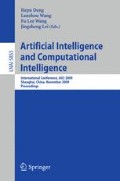Abstract
Time-history analysis of a multiple-degree-of-freedom system with non-viscous damping was considered. It was assumed that the non-viscous damping forces depend on the past history of velocities via convolution integrals over exponentially decaying kernel functions. By transforming the equation of motion into a first-order extended state-space representation and combining the Gauss-Legendre quadrature with the calculation technique of matrix exponential function in the precise time-integration method, a more applicable time-history analysis method of this system was proposed. The main virtues of the proposed method were the avoidance of matrix inversion, the high efficiency and the selectable accuracy. A numerical example was given to demonstrate the validity and efficiency of the method.
Access this chapter
Tax calculation will be finalised at checkout
Purchases are for personal use only
Preview
Unable to display preview. Download preview PDF.
References
Rayleigh, L.: Theory of Sound, 2nd edn., vol. 2. Dover Publications, New York (1877); (1945 re-issue)
Dong, J., Deng, H., Wang, Z.: Studies on the damping models for structural dynamic time history analysis. World Information on Earthquake Engineering 16(4), 63–69 (2000) (in Chinese)
Liang, C., Ou, J.: Relationship between Structural Damping and Material Damping. Earthquake Engineering and Engineering Vibration 26(1), 49–55 (2006) (in Chinese)
Woodhouse, J.: Linear damping models for structural vibration. Journal of Sound and Vibration 215(3), 547–569 (1998)
Maia, N.M.M., Silva, J.M.M., Ribeiro, A.M.R.: On a general model for damping. Journal of Sound and Vibration 218(5), 749–767 (1998)
Li, Q.S., Liu, D.K., Fang, J.Q., Jeary, A.P., Wong, C.K.: Damping in buildings: its neural network model and AR model. Engineering Structures 22, 1216–1223 (2000)
Adhikari, S.: Damping modelling using generalized proportional damping. Journal of Sound and Vibration 293, 156–170 (2006)
Wilson, E.L.: Nonlinear dynamic analysis of complex structures. Earthquake Engineering and Structural Dynamics 1(3), 241–252 (1973)
Newmark, N.M.: A method of computation for structural dynamics. Journal of Engineering Mechanics 85(3), 249–260 (1959)
Zhong, W.: On precise time-integration method for structural dynamics. Journal of Dalian University of Technology 34(2), 131–136 (1994) (in Chinese)
Zhong, W.: On precise integration method. Journal of Computational and Applied Mathematics 163, 59–78 (2004)
Zhong, W., Zhu, J., Zhong, X.: A precise time integration algorithm for nonlinear systems. In: Proc. of WCCM-3, vol. 1, pp. 12–17 (1994)
Qiu, C., Lu, H., Cai, Z.: Solving the problems of nonlinear dynamics based on Hamiltonian system. Chinese Journal of Computational Mechanics 17(2), 127–132 (2000) (in Chinese)
Lu, H., Yu, H., Qiu, C.: An integral equation of non-linear dynamics and its solution method. Acta Mechanica Solida Sinica 22(3), 303–308 (2001) (in Chinese)
Biot, M.A.: Linear thermodynamics and the mechanics of solids. In: Proc. of the third US national congress on applied mechanics, pp. 1–18. ASME Press, New York (1958)
Wagner, N., Adhikari, S.: Symmetric state-space formulation for a class of non-viscously damped systems. AIAA J. 41(5), 951–956 (2003)
Adhikari, S., Woodhouse, J.: Identification of damping: Part 1, viscous damping. Journal of Sound and Vibration 243(1), 43–61 (2001)
Adhikari, S., Wagner, N.: Direct time-domain integration method for exponentially damped linear systems. Computers and Structures 82, 2453–2461 (2004)
Author information
Authors and Affiliations
Editor information
Editors and Affiliations
Rights and permissions
Copyright information
© 2009 Springer-Verlag Berlin Heidelberg
About this paper
Cite this paper
Shen, H., Duan, Z. (2009). A Time-History Analysis Algorithm of a Non-viscously Damped System Using Gauss Precise Integration. In: Deng, H., Wang, L., Wang, F.L., Lei, J. (eds) Artificial Intelligence and Computational Intelligence. AICI 2009. Lecture Notes in Computer Science(), vol 5855. Springer, Berlin, Heidelberg. https://doi.org/10.1007/978-3-642-05253-8_25
Download citation
DOI: https://doi.org/10.1007/978-3-642-05253-8_25
Publisher Name: Springer, Berlin, Heidelberg
Print ISBN: 978-3-642-05252-1
Online ISBN: 978-3-642-05253-8
eBook Packages: Computer ScienceComputer Science (R0)

